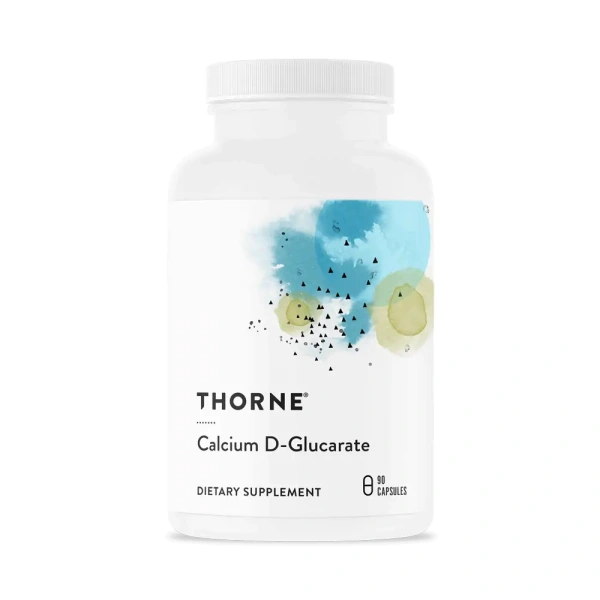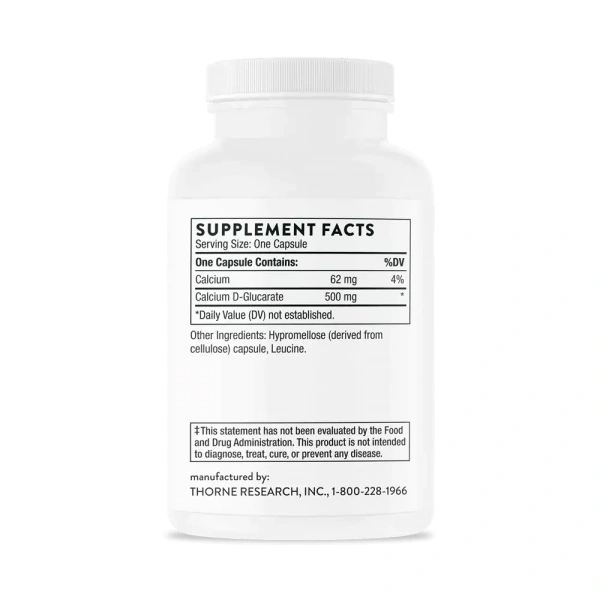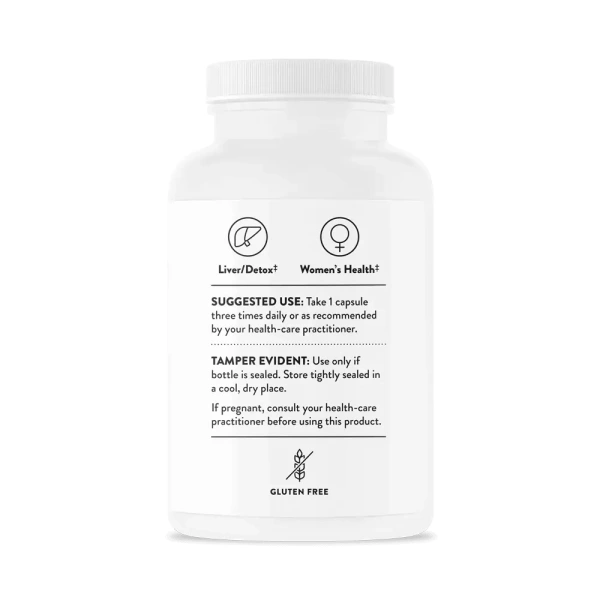- For the home
Health
- Bones and Joints
- Digestion and Healthy GI
- Essential Oils
- Fish Oil / Omega-3
- Healthy Sleep
- Heart and Cardiovascular System
- Immunity
- Liver
- MCT Oil
- Men
- Mind and Focus
- Minerals
- Pet Supplements
- Pro-Health Supplements
- Probiotics
- Senior
- Superfoods
- Urinary Tract
- Vitamins
- Vitamins for hair
- Vitamins for nails
- Vitamins for the skin
- Weight Management
- Woman
Healthy Diet
Herbs
Mother and Baby
Sport
Your Goal
Pet Supplements
Cosmetics
- Cosmetics for children
- Men's Cosmetics
- Unisex Cosmetics
- Women's Cosmetics
- Dezodoranty i perfumy
- Higiena jamy ustnej
- Kosmetyki akcesoria
- Kosmetyki dla dzieci2
- Kosmetyki do ciała
- Kosmetyki do higieny intymnej
- Kosmetyki do opalania
- Kosmetyki do pielęgnacji ust
- Kosmetyki do twarzy
- Kosmetyki do włosów
- Papier toaletowy / chusteczki
THORNE RESEARCH Calcium D-Glucarate (Liver Support) 90 Capsules
Available: 0 pcs.
61,95 €
Price per portion: 0,69 €
Temporarily unavailable
After purchase you will receive 253 pts
Product Details
- Description
- Dosage
- Ingredients Table
- About the brand
- Nutritional information
- Reviews (2)
- Articles
Calcium D-Glucarate (CDG) is produced naturally in small amounts by humans. CDG supplementation has been shown to prevent the recycling of hormones and undesirable environmental toxins, thereby promoting liver detoxification and the excretion of these potentially detrimental substances. Other applications of CDG supplementation include the maintenance of already normal cholesterol levels and facilitating healthy hormone metabolism.
How does it work?
Glucuronidation is the liver's normal process of attaching a glucuronic acid molecule to potentially harmful substances to detoxify and eliminate them from the body. During phase II liver detoxification, certain hormones and various fat-soluble toxins will undergo glucuronidation and be excreted through the bile or urine. Calcium D-Glucarate helps this elimination process to occur uninterrupted.
The more detailed version: Upon ingestion and exposure to the acidic environment of the stomach, Calcium D-Glucarate is metabolized to form D-glucaric acid. D-glucaric acid is further metabolized in the gastrointestinal tract into three compounds that exist in equilibrium and are comprised of approximately 40-percent D-glucaric acid, 30-percent D-glucaro-1,4-lactone, and 30-percent D-glucaro-6,3-lactone. These compounds are then transported to the blood and various internal organs, and subsequently excreted in the urine and bile. Although D-glucaro-1,4-lactone is apparently the most pharmacologically active of the three, it is not commercially available. Also, Calcium D-Glucarate administration results in longer inhibition of beta-glucuronidase (five hours versus one hour) than does D-glucaro-1,4-lactone, so it is the compound used.
Calcium D-Glucarate's detoxifying and chemopreventive properties are attributable to its ability to increase glucuronidation, and the accompanying excretion of harmful compounds. It does so by inhibiting the enzyme beta-glucuronidase. During Phase II detoxification, hormones and various undesirable lipid-soluble toxins are bound to glucuronic acid in the liver (glucuronidation) and excreted through the biliary tract; however, beta-glucuronidase can unbind these toxins, which makes it possible for them to be reabsorbed rather than excreted. D-glucaro-1,4-lactone is the metabolite that most inhibits the activity of beta-glucuronidase, thereby increasing the excretion of toxic compounds and decreasing the activity of harmful substances that are most active in their unbound state. Inhibition of beta-glucuronidase by Calcium D-Glucarate metabolites ultimately results in potentially decreasing the risk of toxicity.
In addition, by reducing the activity of beta-glucuronidase and the viability of harmful intestinal bacteria, the salts of D-glucaric acid have been shown to enhance enterohepatic circulation and reduce cholesterol synthesis, thus resulting in maintenance of healthy cholesterol levels.
Dosage
Serving Size: 1 Capsules
Serving Size: 1 Capsule
Servings per Container: 90
Form: Capsule
Other ingredients
Cannot be used as a substitute of a healthy and balanced diet.
Consult your healthcare practitioner before using this product, especially if you are pregnant or nursing.
Do not exceed recommended dosage per day.
Keep out of reach of children.
Best before: date on the package
All descriptions are the property of the www.mass-zone.eu. Copying or distribution is strictly prohibited! As per the Copyright Act from February 4th, 1994.
Manufacturer: Thorne Research , Inc. P.O. Box 25, Dover, Idaho 83825 USA
Najlepsza jakość i moc.
самый лучший глюкарат, профессионального бренда, отлично помогает вывести все не нужные метаболиты, при синдроме жильбера незаменим, очень быстро нормализует и снижает билирубин.
We make every effort to ensure that reviews come from customers who have used or purchased the product. Reviews are collected, verified, and published according to the rules described in the store's terms and conditions.































